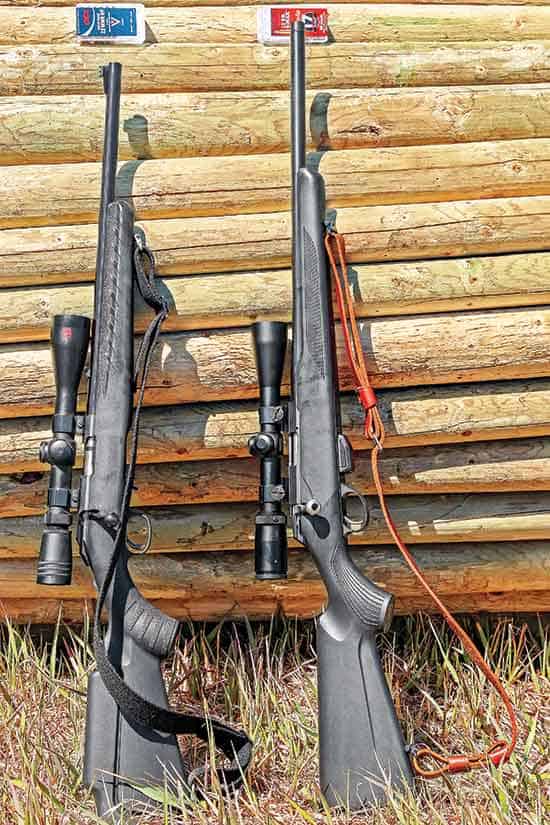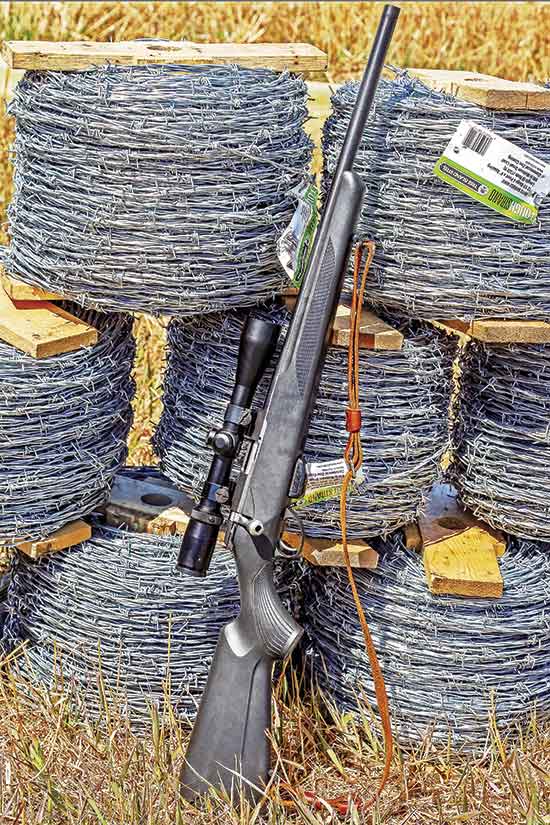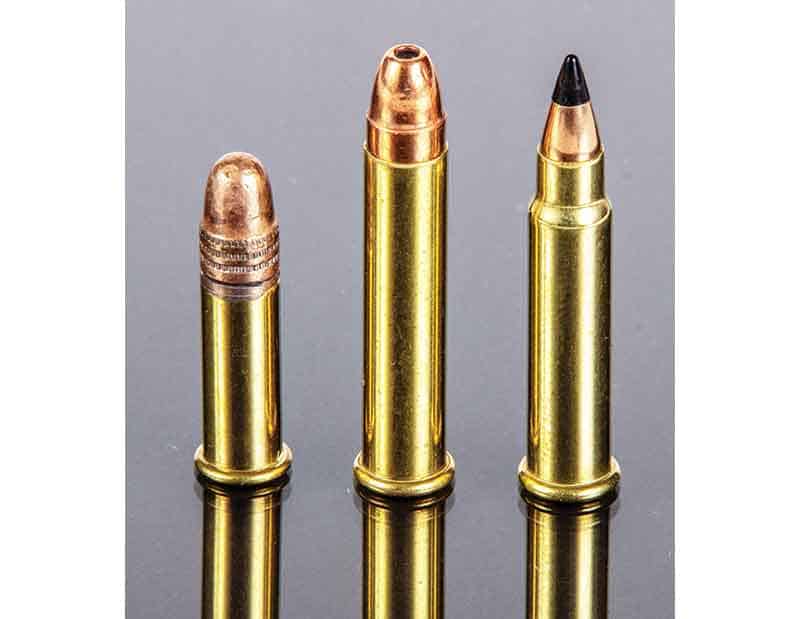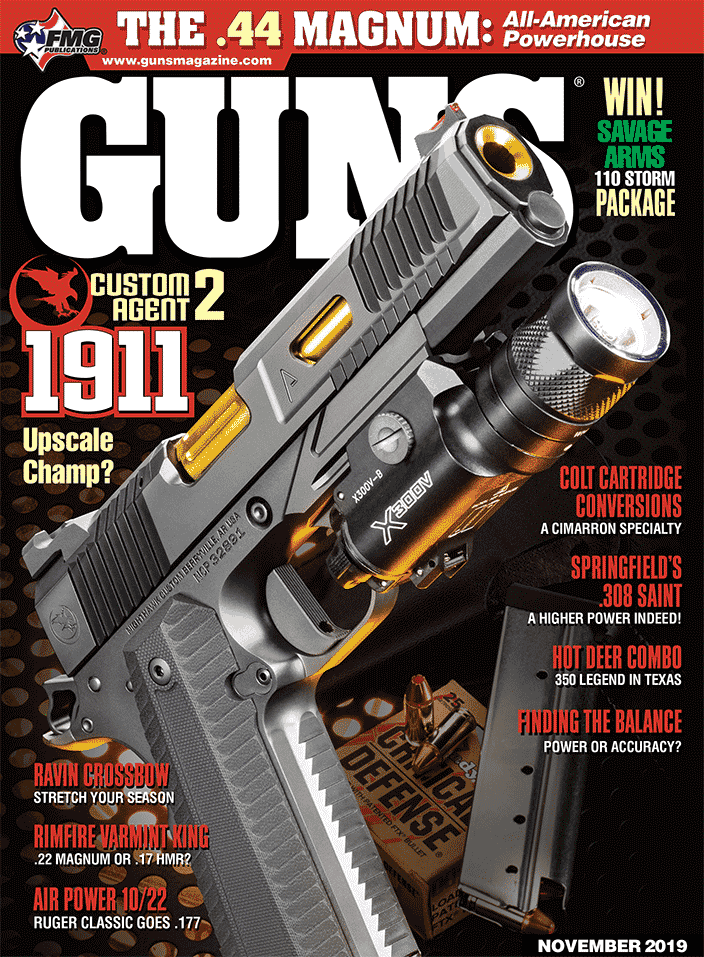WMR or HMR?
Pick your pest poison — .17 or .22
The .22 Winchester Magnum Rimfire was introduced 60 years ago as I write this. Currently it’s offered in more different bullet weights and designs, and in more firearms choices, than at any time in its history.
I was barely into my teens during the early 1960s when the .22 WMR was slowly catching on. Winchester designed it to be both longer and slightly larger in diameter than the .22 Long Rifle to prevent it being loaded in .22 LR chambers. Compared to the .22 LR, velocity took a huge jump — increasing by around 50 percent. Currently, most 40-gr. .22 WMR loads have a claimed muzzle velocity in rifle barrels of around 1,900 fps (compared to about 1,250 fps for the high-speed .22 LR). By way of centerfire comparison, the .300 Win. Mag. exceeds the .30-06 by about 10 percent!
The .22 WMR came in for a fair bit of criticism. Some complained it was too destructive for a small-game cartridge — and it’s true. If you hit a squirrel in the hams, especially with the HP load, there’s not much left for the stewpot. For me as a near-penniless farm boy, the big deal, however, was cost. Then as now, .22 WMR ammo cost 4 to 5 times as much as .22 LR. Heck, I couldn’t even afford .22 LR and stuck to .22 Shorts!
It seems obvious now but it took me a while to figure out the .22 WMR’s niche. The .22 LR is a superb target cartridge, a wonderful plinker and an adequate small game and pest cartridge. With precise shot placement it can punch significantly above its weight.
The .22 WMR was designed as a hunting cartridge. There’s no law against target shooting or plinking with it, but for such activities the round is unnecessarily powerful, loud and expensive. As a small game and pest-control cartridge it’s superb — far superior to the .22 LR. So instead of thinking of it as an expensive rimfire, think of it as an “inexpensive centerfire.”
For pest control and small game hunting, the .22 WMR is ideal. It is also a fine cartridge for a rifle or handgun for emergency use in wilderness country. It isn’t a huge niche, but big enough to keep the cartridge popular for a long time. Remington attempted to grab a share of this market with the 5mm Remington Rimfire Magnum, but failed mainly because it offered little new. The 5mm is a good cartridge, but 38 grains at 2,100 fps is no huge advantage over 40 grains at 1,900 fps.
The .17 Competition Arrives
Hornady’s .17 HMR, introduced in 2002, did offer something new. Hornady cut the bullet weight from 40 grains to 17, designed the bullet with a wicked-looking sharp plastic tip, and increased muzzle velocity nearly 700 fps, from 1,875 to 2,550. The result was a significantly flatter trajectory, making for easier hits on the small targets for which these cartridges are used.
It proved to be a very smart move by Hornady. Manufacturers generally don’t share their sales data, but going by ammunition and rifle choices I see on dealer shelves, the .17 HMR has been very successful and probably outsells the .22 WMR. Even so, I think the .17 has helped the .22 WMR more than it has hurt it.
A little competition can be a healthy thing. For decades it seemed the only bullet choices in .22 WMR were a 40-gr. solid or HP, and manufacturers may have become a bit complacent about accuracy standards. For several years after the .17 HMR was introduced, many users reported better accuracy than they had come to expect from the .22 WMR. Currently .22 WMR loads are available with 30-, 33-, 40-, 45- and 50-gr. loads and any accuracy differences are more likely due to individual rifles.
Currently, I own three of each — putting me firmly astride the fence. For all-around use as a pest-control rifle, I like the .22 WMR, using the CCI 40-gr. Maxi-Mag HP exclusively. I don’t mean to suggest life on the farm is one constant battle with varmints — I’d as soon leave them alone.
But we do get gophers in the garden, badgers in the pasture, skunks digging under the garden shed, squirrels stealing martin eggs, raccoons in grain bins, beavers wrecking ponds and coyotes hanging around to snap up our cats. Having shot literally thousands of pests with both cartridges I’m convinced the heavier WMR bullets do more damage — even on small creatures. On bigger animals they are decisively better.
But for gopher and prairie dog shooting, which means small targets at uncertain ranges, I prefer the flatter trajectory of the .17 HMR. I’ve had 500+ round days with both cartridges in gopher-infested pastures and am convinced I get more consistent results with the .17 HMR. And, if a raccoon or badger came slouching by, I’m pretty sure I wouldn’t give up without a fight!







